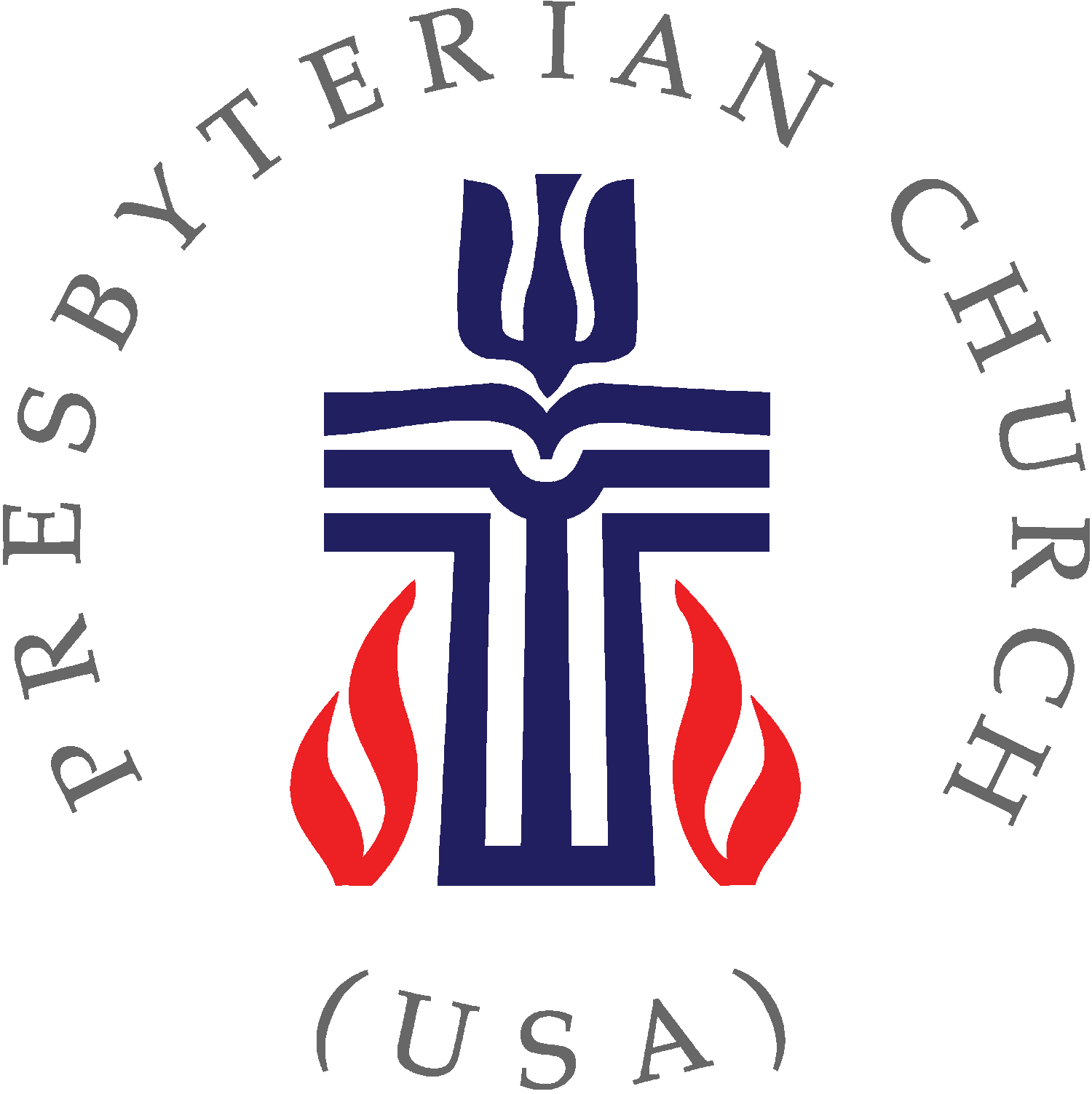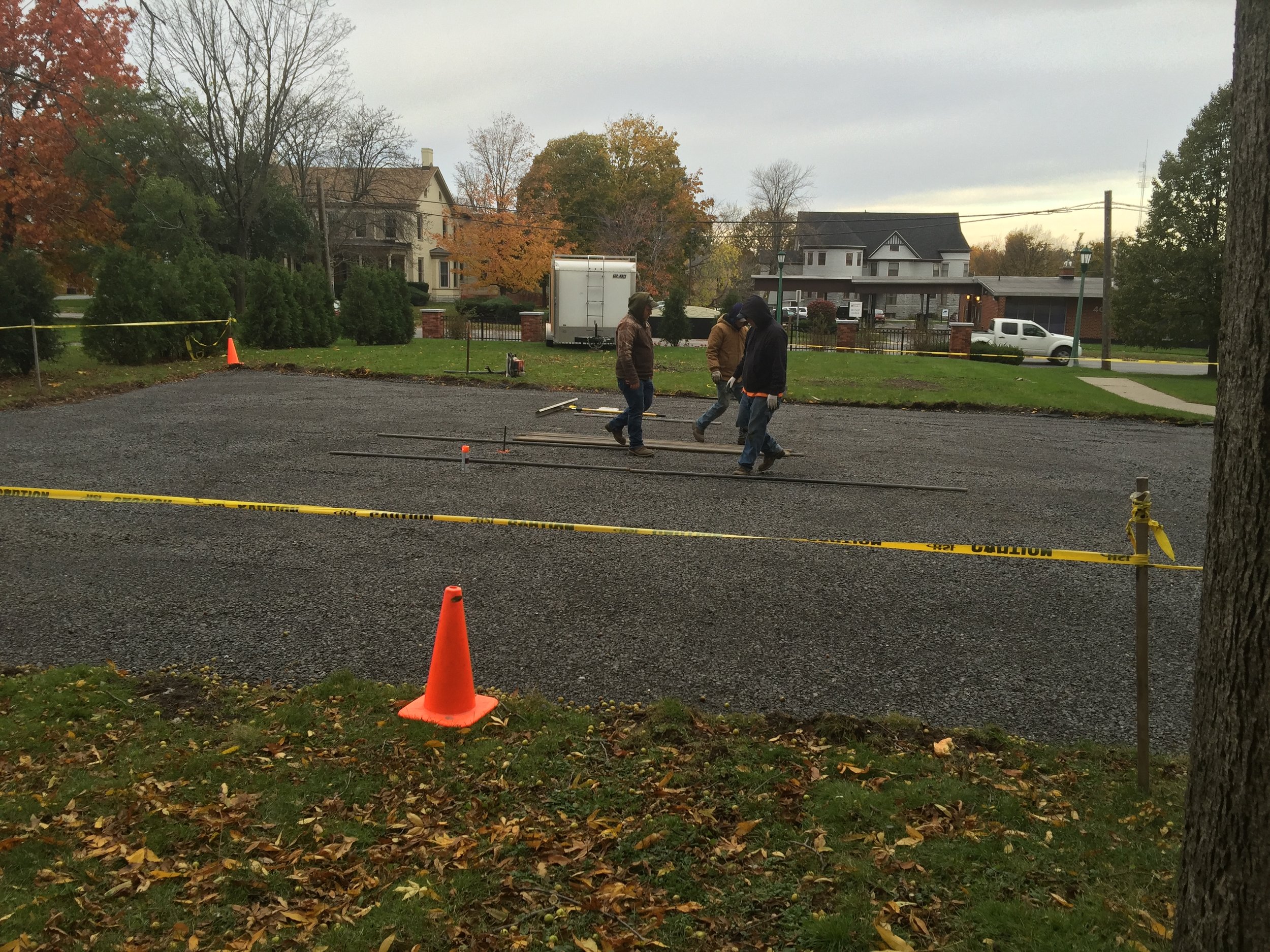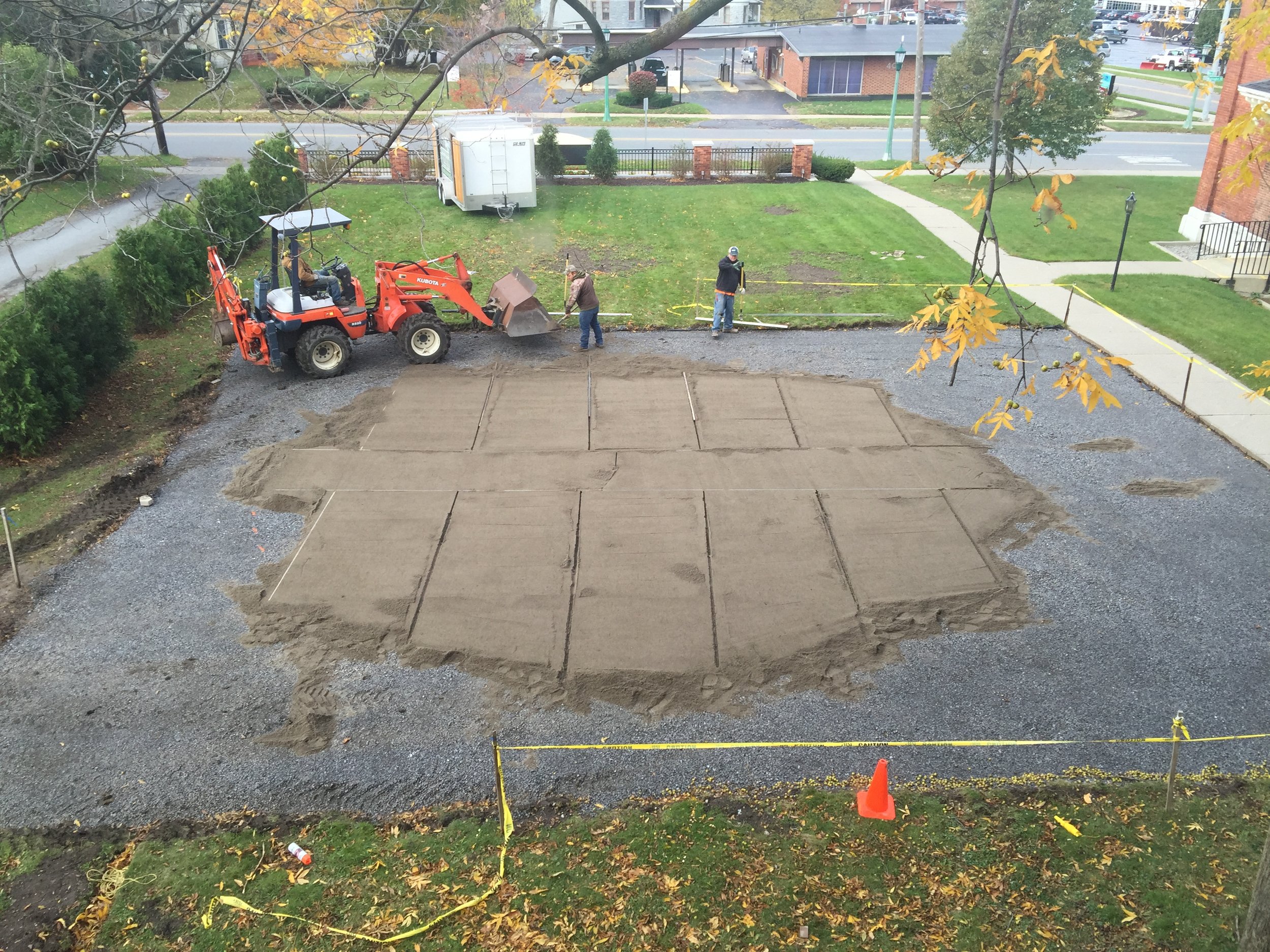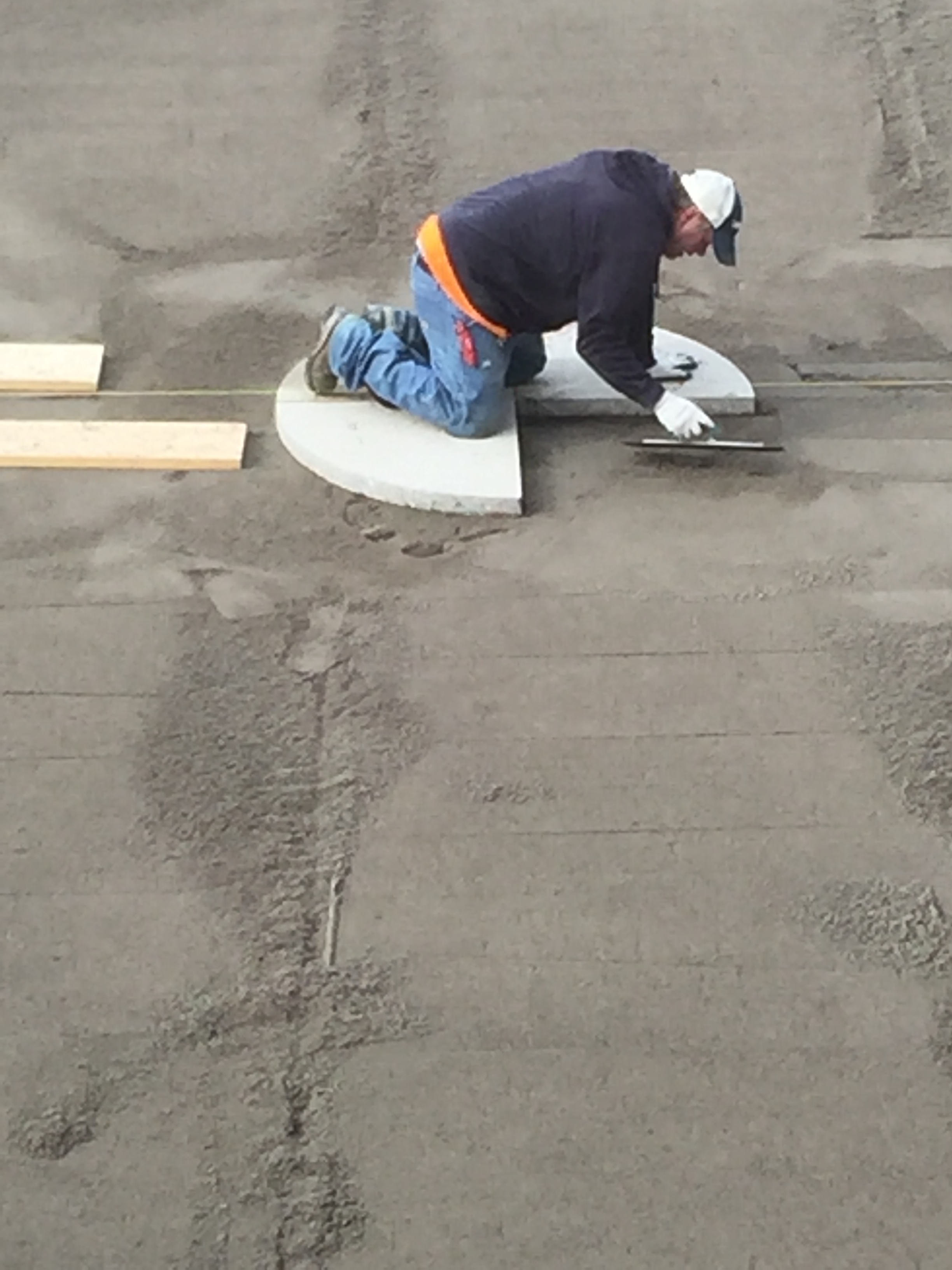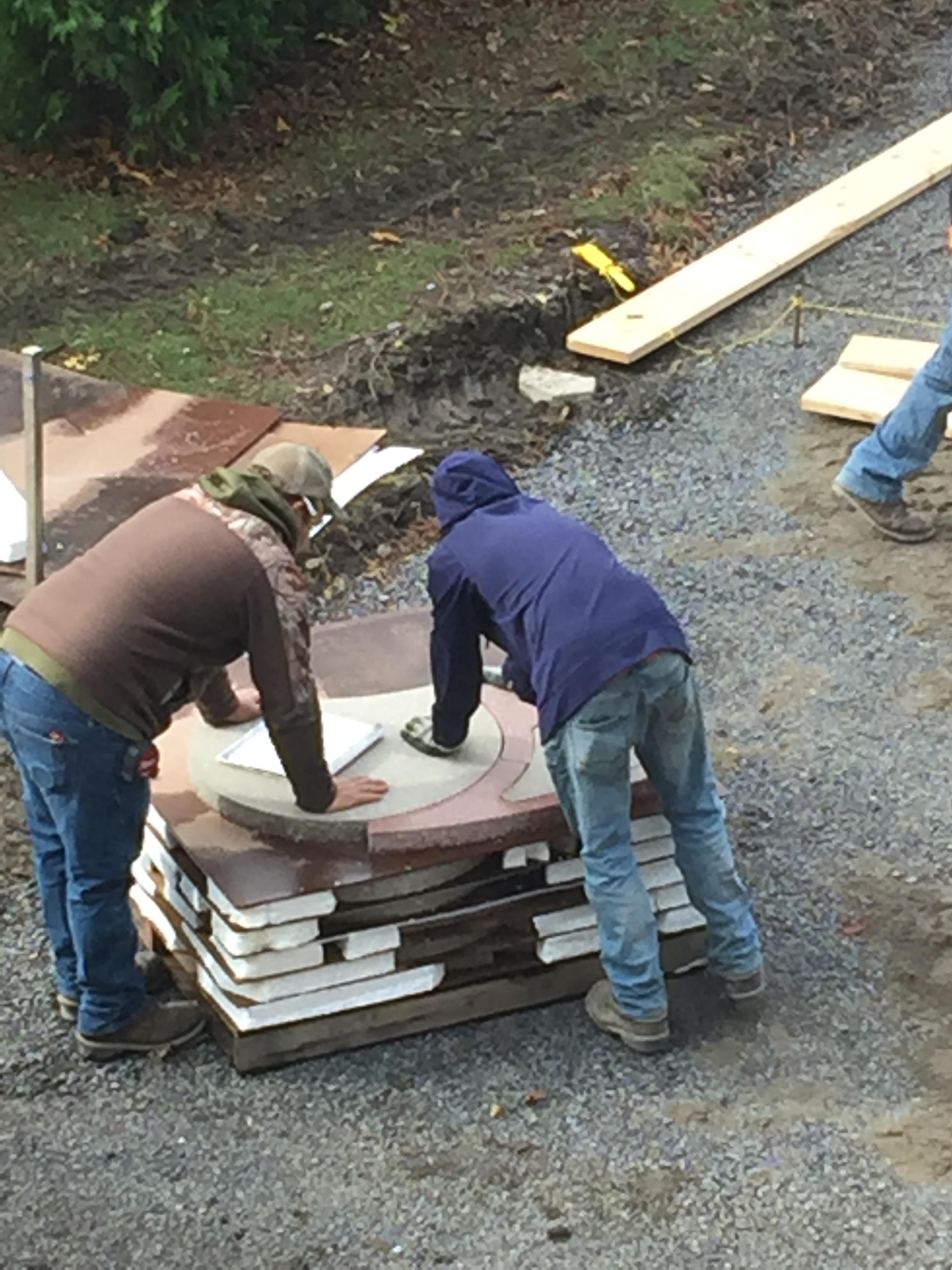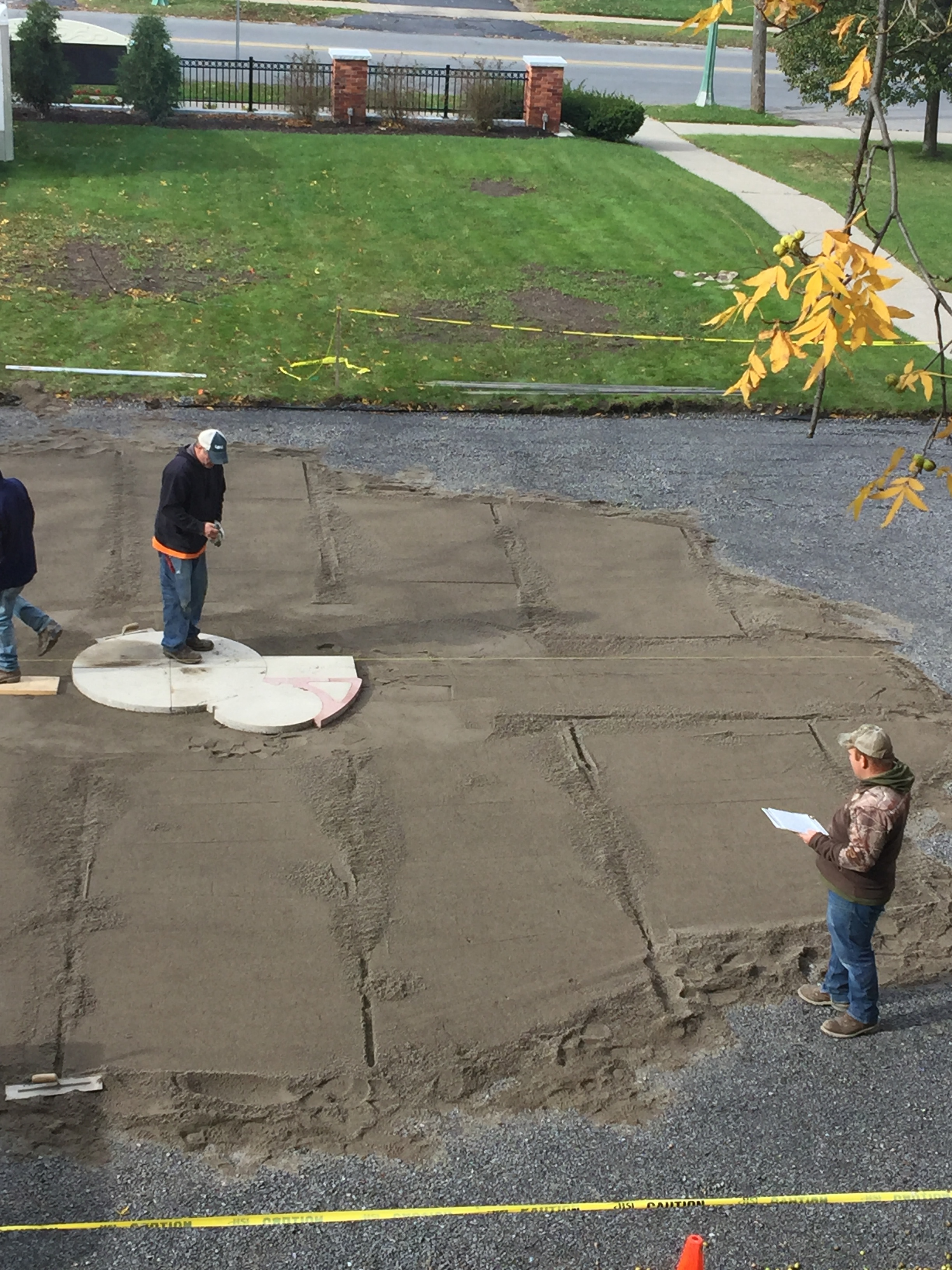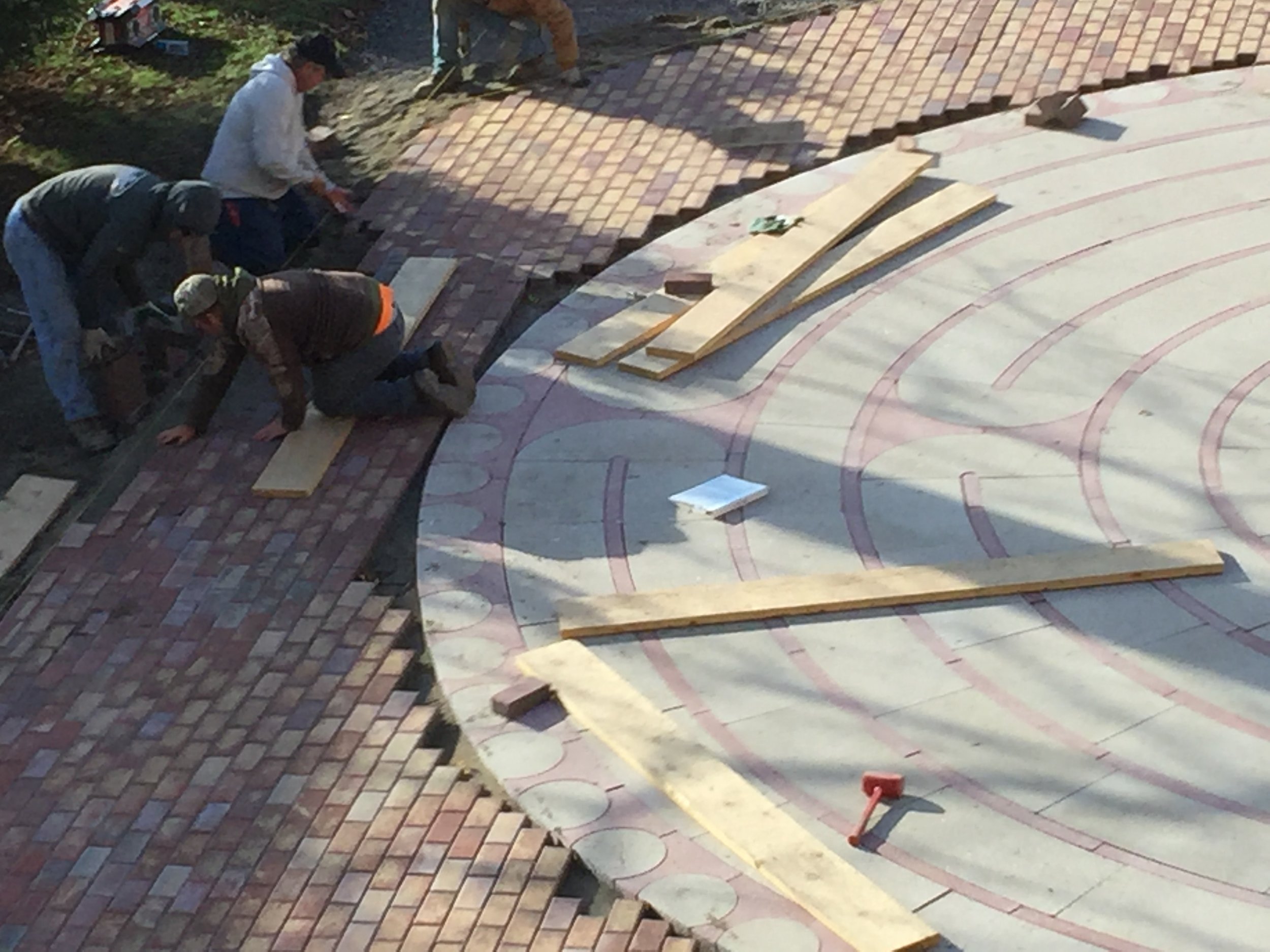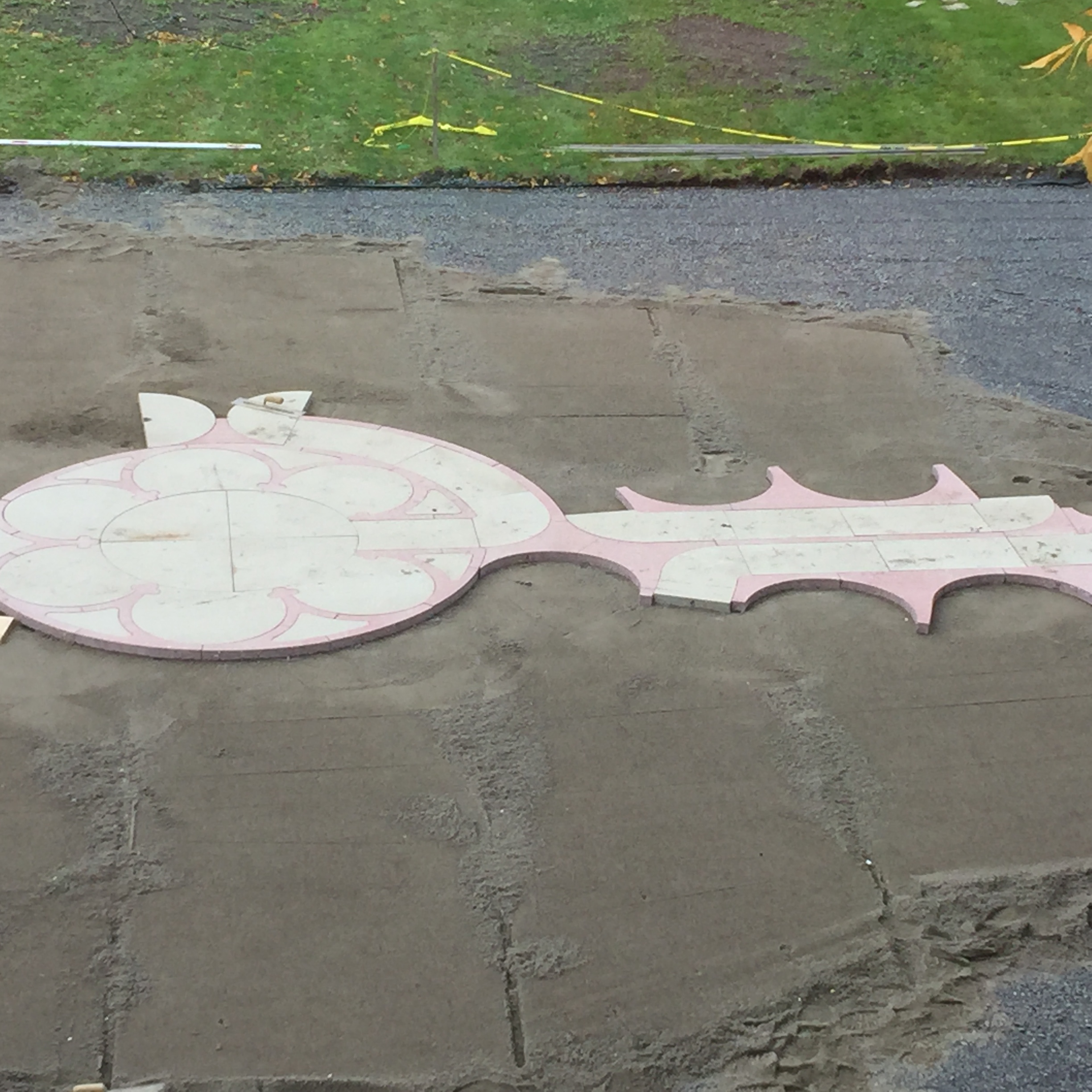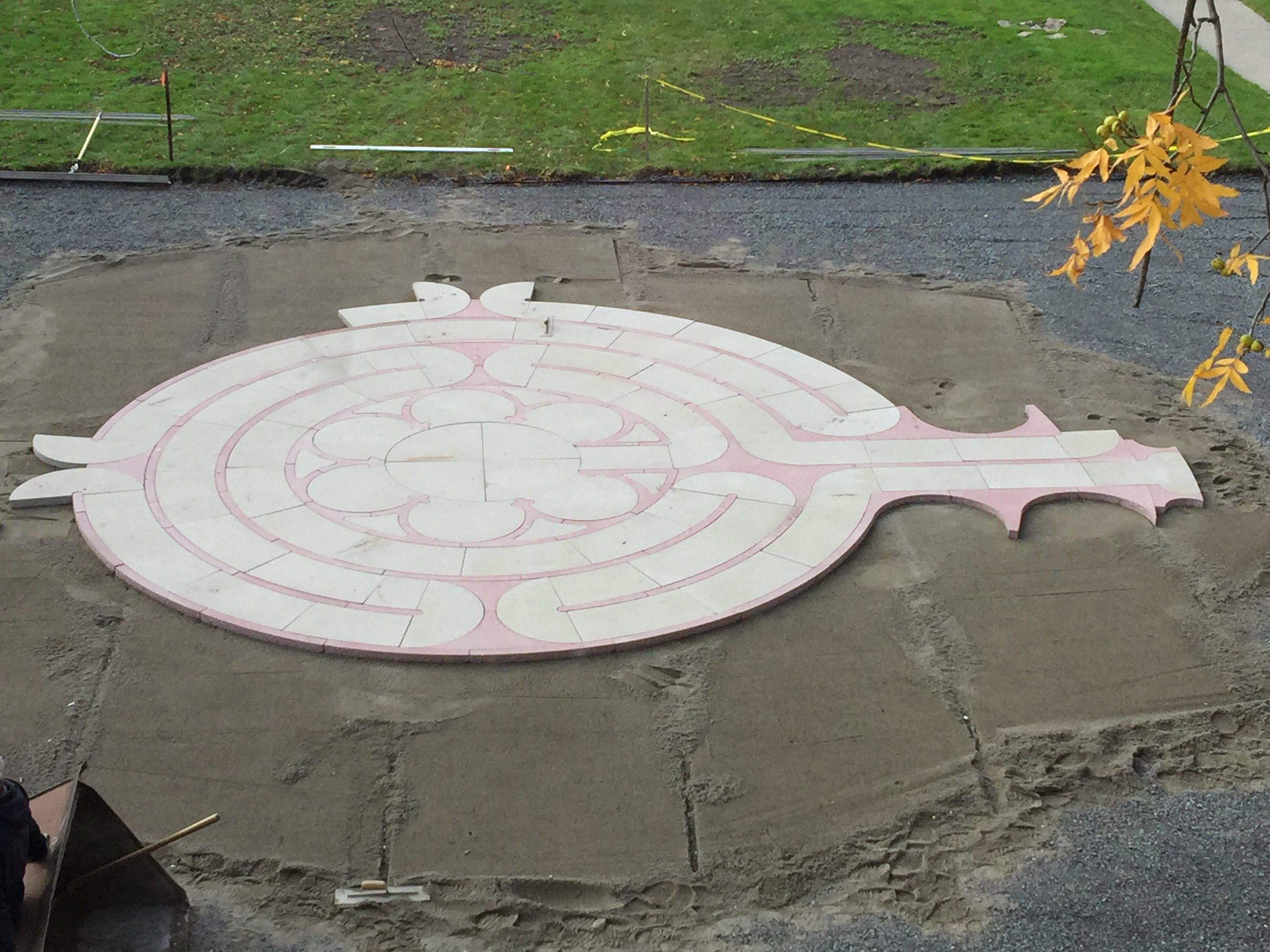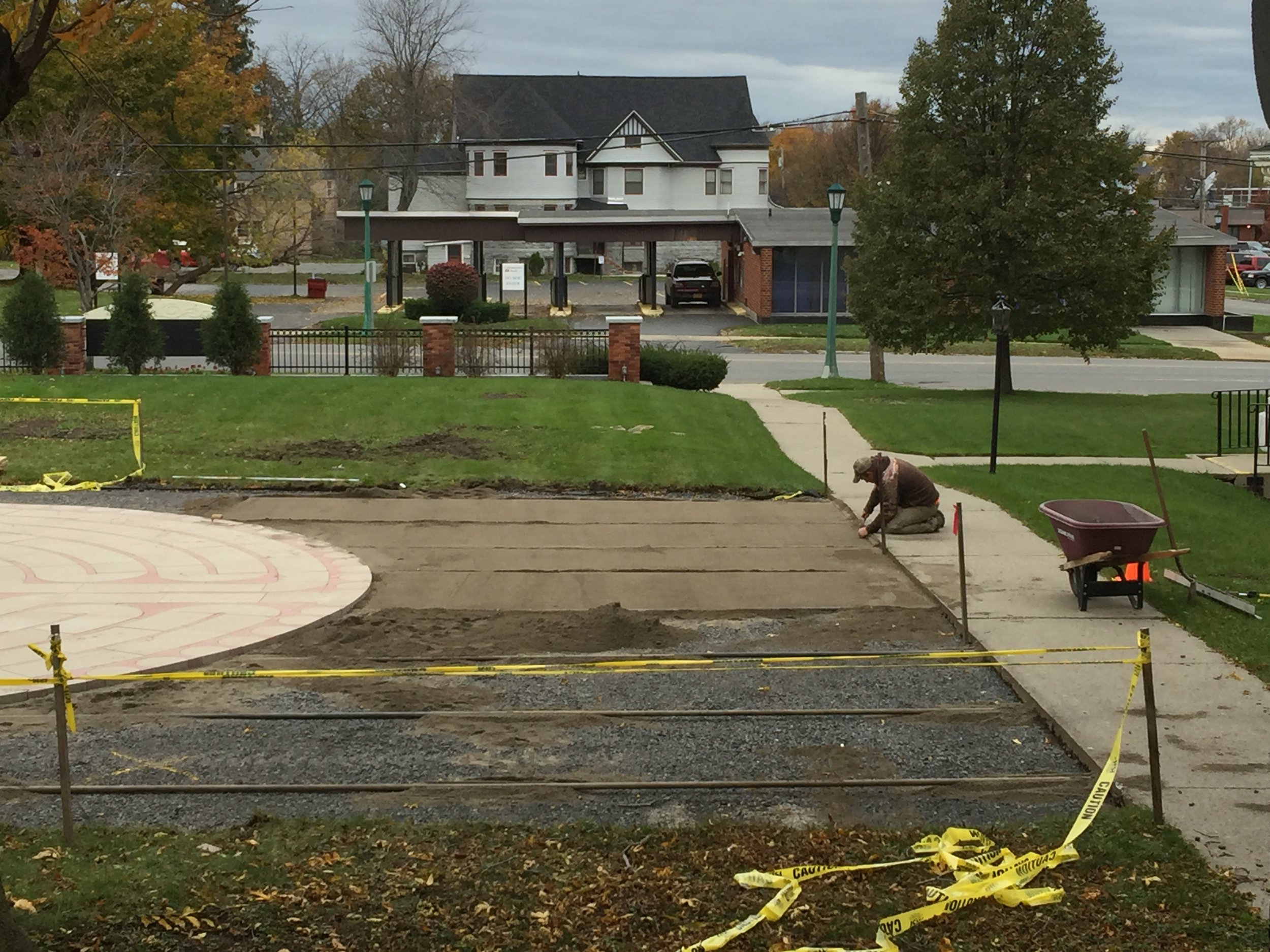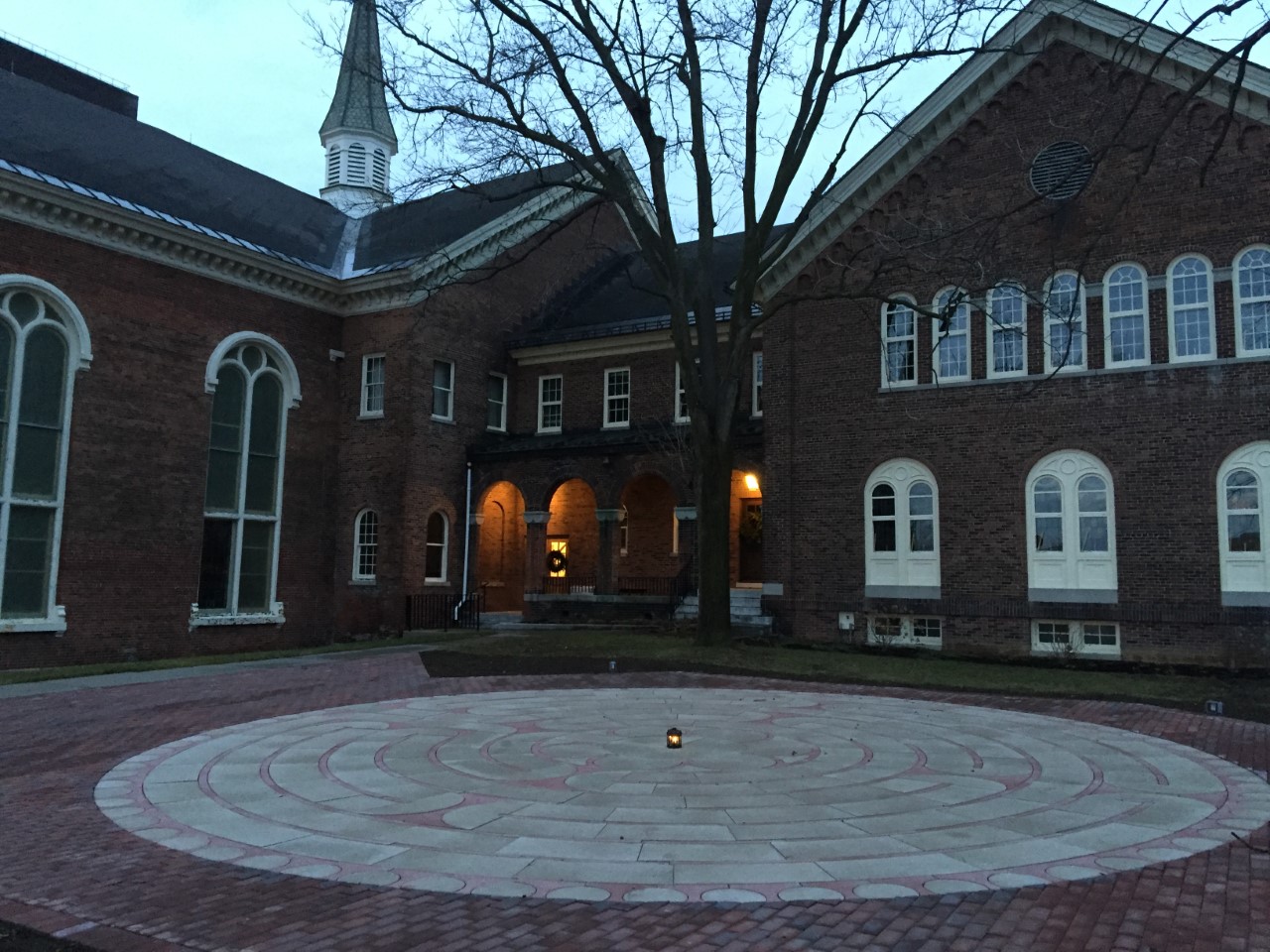Our Labyrinth
Make me to know your ways, O Lord; teach me your paths. Lead me in your truth, and teach me, for you are the God of my salvation; for you I wait all day long.
~Psalm 25:4-5
This labyrinth is a gift to the community – it lies about 1/4 mile toward Public Square from Samaritan Medical Center, and is just around the corner from the Dulles State Office Building, the site of the local summer Farmers Market.
About our Labyrinth
A labyrinth is a unique design on a designated pathway from the outside in, which contains no dead ends, unlike the way a maze works. Labyrinths are found all over the world and in many cultures are based upon a principle of “sacred geometry”. Its purpose is to provide a clearly seen path to the center along twists and turns that allow the walker to slow down and concentrate upon their path to the center and then back out to the outside. Frequently used for meditation or prayer, people credit the walk with finding peace and problem solving. It is a scientifically credited stress reliever, because it allows the walker to totally focus on the path and quiet the static of their life. It has been noted through some studies that turning left and right in a continuous path is demonstrated to slow down brain activity.
Design
Construction
The 32’ diameter, cream and red large paver stone ‘Exemplar Labyrinth’, Chartres Style, was designed, cut and laid out by PaverArt, then disassembled carefully with reassembly instructions and shipped on 10 pallets, 24,000 pounds gross weight to First Presbyterian Church. It was off-loaded by the Watertown landscape contractor LandPro, who then had to wait a week for the weather to settle in November of 2017 before preparing the bed and reassembling the pieces of the labyrinth.
While there are movable painted canvas designs and locally built rugged stone bordered garden designs, to our knowledge there are no other large stone Chartres style labyrinths in the northern NY. This design is based upon the labyrinth of Chartres Cathedral in France, built in the 13th century, which served in the Middle Ages as a pilgrimage for those not able to spend the time or funds on an actual pilgrimage to the Holy City of Jerusalem.
